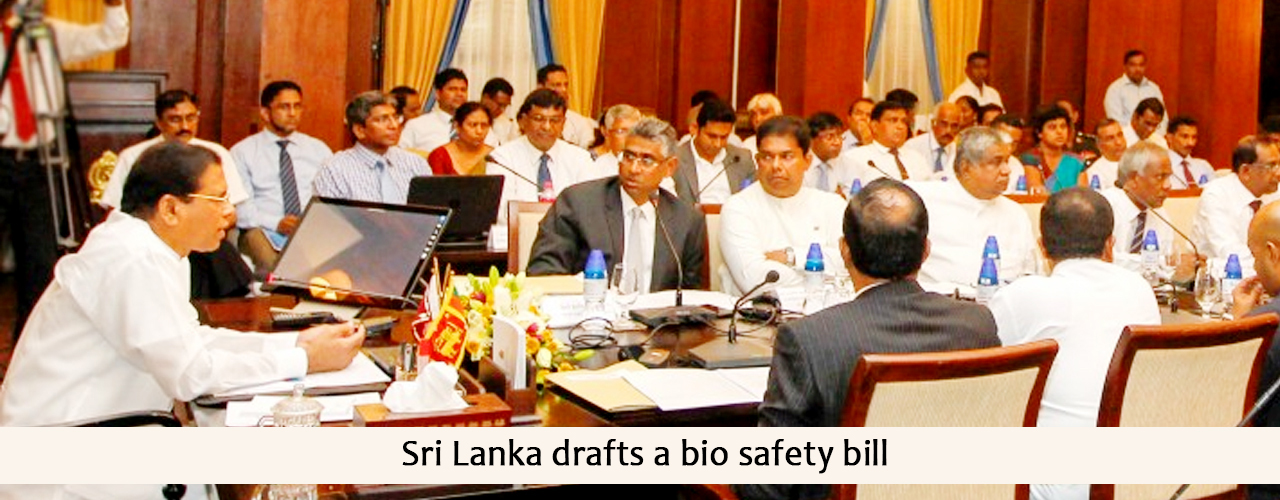Sri Lanka drafts a bio safety bill
Sri Lanka has taken measures to draft a bio safety bill with the purpose to counteract the effects of organism that are released as a product of the gene technology. According to the cabinet statement, “Sri Lanka is a member of the Cartagena Protocol on Bio–safety, hence, legal provisions should be introduced to minimize the risk caused by use, promotion, sale, use in commercial activities, transport, import, export, re-export, transfer, disposal and release of such organism.”
Cartagena Protocol on Bio-Safety is an international agreement that acts as a supplement to the Convention on Biological Diversity and is effective from 2003. The specific purpose of the protocol is to minimize or counteract the harmful effects posed by genetically modified organisms.
The proposal was made by the President, Maithripala Sirisena acting in the capacity of the Minister of Mahaweli Development and Environment and was subsequently approved by the cabinet.
There were many instances in the past where efforts were made to draft a bio-safety bill that conformed to precaution first principles that comply with the Cartagena Protocol. However, none of these efforts bore fruit due to a number of reasons.
OSL TAKE
Bio- Safety is a sector that is becoming increasingly critical with more and more GMO being introduced due to advances of technology. With an increasing populace across the world, a growing demand for food products has also risen. Due to numerous issues with production capacities which include harsh weather conditions, genetically modified organisms are being viewed as solutions to producing crops which can survive harsher weather conditions and have resistance. This is a trend that is likely to continue on an upwards curve in the coming years.
Despite the reliance on GMO, there are significant risks associated with such crops both in terms of health issues and larger impact to the environment and societies. The move to introduce a bill that will have the required safety measures in place will ensure such risks are minimized and bring about a more cautious and productive GMO mechanisms in to place.
| Article Code : | VBS/AT/17112017/Z_3 |

